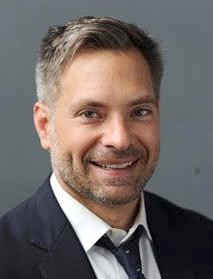“Gatsby believed in the green light, the orgastic future that year by year recedes before us. It eluded us then, but that’s no matter – tomorrow we will run faster, stretch out our arms farther.” – Nick Carraway in The Great Gatsby
By Paul Glader
Did you see The New York Times story in May about two guys in Connecticut who have spent the last five years trying to prove that writer F. Scott Fitzgerald was inspired to write the famous novel “The Great Gatsby” while he was in Westport?
I was immediately annoyed by their wishful thinking, their provincialism and their audacity. So was former Rep. Steve Israel from Huntington, who wrote a pointed retort in Newsday in June titled, “Don’t turn the page on this literary heist.“
Israel took umbrage at Robert Steven Williams and Richard Webb Jr. for their armchair historian sleuthing, what they call “literary detective work,” that culminates in a coffee table book and a documentary coming out this fall.
They focus on the honeymoon summer of 1920 that Scott and Zelda spent in Westport two years before they moved to Great Neck.
Williams and Webb acknowledge that Scott and Zelda did, in fact, live in Great Neck from 1922-1924 when Scott started writing the book.
They admit that Gatsby was set in large part on Long Island – namely Great Neck as West Egg and Manhasset as East Egg.
They acknowledge references to Queens and Long Island locations such as Northern Boulevard in the novel. But then they try to find shreds of evidence to suggest that people and places in Westport, Conn., influenced them too.
“We’re not saying it’s exclusively one or the other” regarding Westport or Great Neck, Williams told the Times. “We call it the beachy blend” before weaseling an argument that Westport was more relevant.
This kind of parochial one-upsmanship annoyed Israel.
He called it a “mugging of Long Island’s literary identity.” He wonders if Connecticut will also try to lay claim to other Long Island writers such as Nelson DeMille, Colson Whitehead, Jack Kerouac, Teddy Roosevelt, Walt Whitman, Mario Puzo, Susan Isaacs, Michael Crichton and Alyson Richman?
So I saw Webb and Williams were slated to speak at the Princeton Club (Fitzgerald was a 1917 alumnus of Princeton) in Manhattan in late July about their research. I went to hear their arguments.
Webb and Williams are charismatic and knowledgeable Fitzgerald nerds.
With slides, videos and tag-team rhetoric, they made their case that Scott and Zelda’s little waterfront cottage in Westport perhaps resembled Nick Carroway’s cottage in the novel. They argued that the estate of a mysterious multi-millionaire neighbor, F.E. Lewis, might have been the true inspiration for the Jay Gatsby character in the novel.
They even postulate that the green light at the end of the dock in the novel might have existed in Westport instead of Long Island.
Sitting there listening, I quibbled with some of their assertions, but was struck by their care and consideration for local history.
They espoused a general passion for literature, history and the Fitzgeralds. They talk about Scott’s other novels such as “The Beautiful and Damned.”
They talk about the role of Zelda. They talk about the meaning of the literature.
How many people on the North Shore of Long Island know that Scott and Zelda lived in Great Neck and set Gatsby here?
Frankly, during my three years living here, I’ve met shockingly few people who know such facts. We see few to no markers of that incredible literary history in this place.
Meanwhile, in Westport, the historical society has started offering 2-hour Gatsby walking tours. The Gatsby in Connecticut boosters have a Facebook page with 785 followers.
They have a web site and an email list.
Westport is declaring May 14 (the day F. Scott signed the lease on his home in Westport) as “Gatsby Day.” Webb and Williams will speak to the Great Neck Historical Society on Sunday, Oct. 21, at 2 p.m.
At the end of their talk, they admit the Jay Gatsby character is most likely an amalgam of nine or so people.
They suggest Fitzgerald’s alcoholism may have caused him to blend memories from several places he lived. The filmmakers concede that, “Westport deserves some place in Fitzgerald’s legacy.”
And they are justified in that quest, however realistic or quixotic.
“In an age of streaming, tweeting and instant messaging, we’ve lost an appreciation for Long Island’s important place in meaningful literature,” Israel wrote. “We’re not just malls and beaches and nail salons and pizza places and Chinese takeout. Nor should we be defined by the celebrity-packed Hamptons or the gated enclaves of the North Shore.”
Fitzgerald’s novel is, in part, about the emptiness of materialism and of trying to recapture bygone eras.
He concludes his novel with a statement by Carraway relevant to recapturing our own literary heritage: “So we beat on, boats against the current, borne back ceaselessly into the past.”
Paul Glader is an associate professor of journalism, media and entrepreneurship at The King’s College in New York City.

